Related Research Articles

Ansel Easton Adams was an American landscape photographer and environmentalist known for his black-and-white images of the American West. He helped found Group f/64, an association of photographers advocating "pure" photography which favored sharp focus and the use of the full tonal range of a photograph. He and Fred Archer developed a system of image-making called the Zone System, a method of achieving a desired final print through a technical understanding of how the tonal range of an image is the result of choices made in exposure, negative development, and printing.

Dorothea Lange was an American documentary photographer and photojournalist, best known for her Depression-era work for the Farm Security Administration (FSA). Lange's photographs influenced the development of documentary photography and humanized the consequences of the Great Depression.

Imogen Cunningham was an American photographer known for her botanical photography, nudes, and industrial landscapes. Cunningham was a member of the California-based Group f/64, known for its dedication to the sharp-focus rendition of simple subjects.
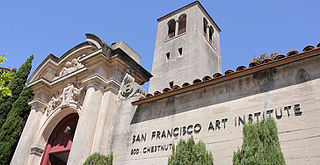
San Francisco Art Institute (SFAI) was a private college of contemporary art in San Francisco, California. Founded in 1871, SFAI was one of the oldest art schools in the United States and the oldest west of the Mississippi River. Approximately 220 undergraduates and 112 graduate students were enrolled in 2021. The institution was accredited by the Western Association of Schools and Colleges (WASC) and the National Association of Schools of Art and Design (NASAD), and was a member of the Association of Independent Colleges of Art and Design (AICAD). The school closed permanently in July 2022.

Ruth Bernhard was a German-born American photographer.
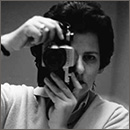
Ruth-Marion Baruch (1922–1997) was an American photographer remembered for her pictures of the San Francisco Bay Area in the 1960s.

William Heick was a San Francisco-based photographer and filmmaker. He is best known for his ethnographic photographs and documentary films of North American Indian cultures.Heick served as producer-director and chief cinematographer for the Anthropology Department of the University of California, Berkeley on their National Science Foundation supported American Indian Film Project. His photographs capture the life and culture of Native Americans from the Kwakiutl, Kashaya Pomo, Hupa, Navajo, Blackfoot and Sioux. He filmed a number of award winning films in this series along with the documentaries Pomo Shaman and Sucking Doctor, a Pomo doctoring ceremony considered by anthropologists to be one of the most complete and outstanding films of an aboriginal ceremony made to date.
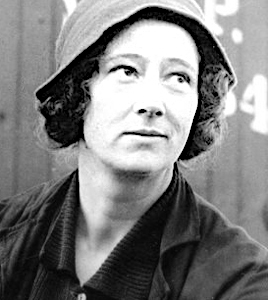
Consuelo Delesseps Kanaga was an American photographer and writer who became well known for her photographs of African-Americans.
Alma Ruth Lavenson was an American photographer active in the 1920s and 1930s. She worked with and was a close friend of Ansel Adams, Imogen Cunningham, Edward Weston and other photographic masters of the period.
Monticello was a town in Napa County, California. The site of the settlement is completely covered by Lake Berryessa.

Benjamen Chinn was an American photographer known especially for his black and white images of Chinatown, San Francisco and of Paris, France in the late 1940s and early 1950s.
Charles Cameron Macauley was a photographer, filmmaker and educator noted for his prize winning still photographs, his ethnographic films and his expertise on historic films and photographs. His career spanned over 75 years.

Morley Baer, an American photographer and teacher, was born in Toledo, Ohio. Baer was head of the photography department at the San Francisco Art Institute, and known for his photographs of San Francisco's "Painted Ladies" Victorian houses, California buildings, landscape and seascapes.

Dody Weston Thompson was a 20th-century American photographer and chronicler of the history and craft of photography. She learned the art in 1947 and developed her own expression of “straight” or realistic photography, the style that emerged in Northern California in the 1930s. Dody worked closely with contemporary icons Edward Weston, Brett Weston and Ansel Adams during the late 1940s and through the 1950s, with additional collaboration with Brett Weston in the 1980s.
Rondal Partridge was an American photographer. After working as an assistant to well-known photographers Dorothea Lange and Ansel Adams in his youth, he went on to a long career as a photographer and filmmaker.
Sandra S. "Sandy" Phillips is an American writer, and curator working in the field of photography. She is the Curator Emeritus of Photography at the San Francisco Museum of Modern Art. She joined the museum as curator of photography in 1987 and was promoted to senior curator of photography in 1999 in acknowledgement of her considerable contributions to SFMOMA. A photographic historian and former curator at the Vassar College Art Gallery in Poughkeepsie, N.Y., Phillips succeeded Van Deren Coke as head of one of the country’s most active departments of photography. Phillips stepped down from her full time position in 2016.

David S. Johnson is an American photographer. He is known for his portrayal of society, urban life, and the jazz culture of San Francisco's Fillmore District in the 1940s and 1950s, as well as figures of the civil rights movement of the 1960s. Born in Florida under segregation and trained at the California School of Fine Arts, he was the first African American student of photographer Ansel Adams.
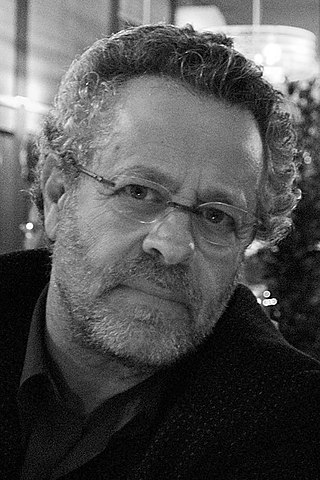
Arthur Ollman is an American photographer, author, curator, professor emeritus (San Diego State University, and founding director of The Museum of Photographic Arts, San Diego. He served as MoPA director from 1983 to 2006, and as director of the School of Art, Design and Art History, SDSU, from 2006 to 2011. He was president of the board of directors for the Foundation for the Exhibition of Photography and has authored and contributed to more than twenty-five books and catalogs.
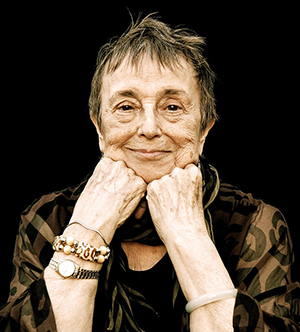
Zoe Lowenthal Brown was an American photographer, painter, technical writer and editor. Her work as a photographer has been affiliated with Minor White.
Geraldine Sharpe (1929–1968), also known as Gerry Sharpe, was an American photographer. She had worked as an assistant to Ansel Adams. Sharpe's two major bodies of work include photographs of landscapes, and of Ghana.
References
- ↑ Grimes, William (March 23, 2009). "Pirkle Jones, Documentary Photographer, Dies at 95". The New York Times . Retrieved March 23, 2009.
- ↑ Woo, Elaine (March 23, 2009). "Pirkle Jones, California photographer, dies at 95". Los Angeles Times . Retrieved March 24, 2009.
- ↑ Comer, Stephanie; Klochko, Deborah; Gunderson, Jeff (2006). The Moment of Seeing. San Francisco: Chronicle Books LLC. pp. 22–66. ISBN 978-0-8118-5468-9.
- ↑ Baruch, Ruth-Marion; Jones, Pirkle. "Ransohoff salesgirl dreaming, #9 from Illusion For Sale, San Francisco". digitalcollections.library.ucsc.edu.
- ↑ "Pirkle Jones photos of Panthers, Summer of Love on exhibit". Marin Independent Journal. 12 May 2011. Retrieved 18 July 2023.
- ↑ "The Black Panthers 1968: Photographs by Ruth-Marion Baruch and Pirkle Jones", University of California/Berkeley Art Museum, http://www.bampfa.berkeley.edu/press/release/TXT0061 accessed December 14, 2011
- ↑ Baruch, Ruth-Marion; Jones, Pirkle (2012). Black Power: Flower Power. Pirkle Jones Foundation. ISBN 978-0-9819933-7-9.
- ↑ "Hands Seen as Symbols". The San Francisco Examiner . 1955-01-16. p. 62. Retrieved 2022-12-18.
- ↑ Rappaport, Scott (7 October 2016). "UC Santa Cruz receives largest-ever gift". University of California. Retrieved 18 July 2023.